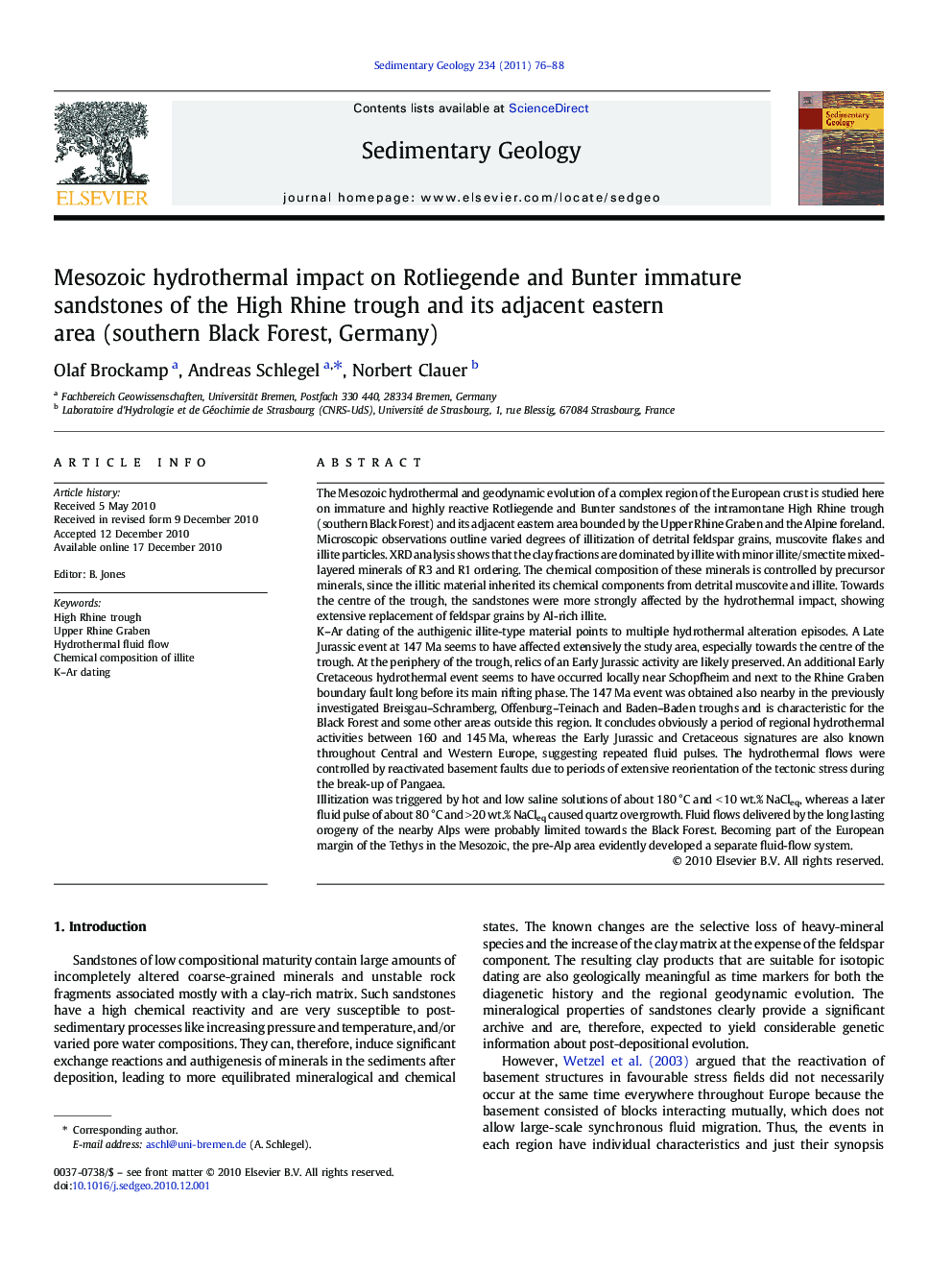| Article ID | Journal | Published Year | Pages | File Type |
|---|---|---|---|---|
| 4690021 | Sedimentary Geology | 2011 | 13 Pages |
The Mesozoic hydrothermal and geodynamic evolution of a complex region of the European crust is studied here on immature and highly reactive Rotliegende and Bunter sandstones of the intramontane High Rhine trough (southern Black Forest) and its adjacent eastern area bounded by the Upper Rhine Graben and the Alpine foreland.Microscopic observations outline varied degrees of illitization of detrital feldspar grains, muscovite flakes and illite particles. XRD analysis shows that the clay fractions are dominated by illite with minor illite/smectite mixed-layered minerals of R3 and R1 ordering. The chemical composition of these minerals is controlled by precursor minerals, since the illitic material inherited its chemical components from detrital muscovite and illite. Towards the centre of the trough, the sandstones were more strongly affected by the hydrothermal impact, showing extensive replacement of feldspar grains by Al-rich illite.K–Ar dating of the authigenic illite-type material points to multiple hydrothermal alteration episodes. A Late Jurassic event at 147 Ma seems to have affected extensively the study area, especially towards the centre of the trough. At the periphery of the trough, relics of an Early Jurassic activity are likely preserved. An additional Early Cretaceous hydrothermal event seems to have occurred locally near Schopfheim and next to the Rhine Graben boundary fault long before its main rifting phase. The 147 Ma event was obtained also nearby in the previously investigated Breisgau–Schramberg, Offenburg–Teinach and Baden–Baden troughs and is characteristic for the Black Forest and some other areas outside this region. It concludes obviously a period of regional hydrothermal activities between 160 and 145 Ma, whereas the Early Jurassic and Cretaceous signatures are also known throughout Central and Western Europe, suggesting repeated fluid pulses. The hydrothermal flows were controlled by reactivated basement faults due to periods of extensive reorientation of the tectonic stress during the break-up of Pangaea.Illitization was triggered by hot and low saline solutions of about 180 °C and < 10 wt.% NaCleq, whereas a later fluid pulse of about 80 °C and >20 wt.% NaCleq caused quartz overgrowth. Fluid flows delivered by the long lasting orogeny of the nearby Alps were probably limited towards the Black Forest. Becoming part of the European margin of the Tethys in the Mesozoic, the pre-Alp area evidently developed a separate fluid-flow system.
